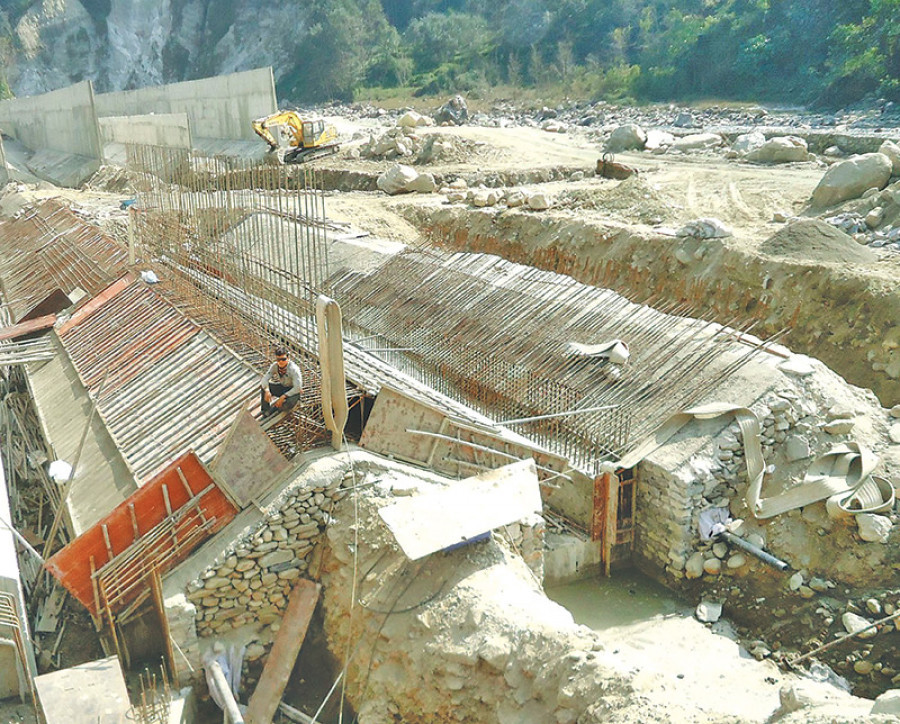Climate & Environment
Modi Khola hydropower projects are not abiding by EIA compliance: Report
The hydel projects have failed to maintain a minimum 10 percent of water in the dry season to maintain the aquatic life and their habitat.
Chandan Kumar Mandal
Hydroelectricity projects built along the Modi Khola are found to be not complying with the environmental impact assessment reports leaving an adverse impact on the environment, according to the latest study.
The study, which was carried out to examine the environmental impact of the rapid development of hydropower projects across the country, was based on four hydropower projects—Modi, Lower Modi 1, Middle Modi and Lower Modi—along the Modi River that originates in Annapurna Himalaya Range.
According to the report findings, these projects had completed initial impact assessment (IEE) or environmental impact assessment (EIA) to identify the impacts of the projects and measures to minimise such effects, however, the implementation on the ground was not encouraging.
“The level of implementation of the environmental measures can be seen from the fact that neither the builder nor the engineers had heard of any such EIA reports and measures mentioned in those reports,” said Batu Krishna Uprety, former Environment ministry joint-secretary and the team leader of the study team. “They were found to be unaware of the environmental impact of the hydropower projects and measures recommended by the EIA report. The report was not even available on the project site.”
Not a single hydropower projects along Modi Khola had been following the provision of releasing 10 percent of water in the dry season to maintain the aquatic life and their habitat as mentioned in the Hydropower Development Policy-2011.
Although fish-ladders were constructed to help the upstream-downstream movement of fish, they were found to be defunct.
“Neither location nor design of the fish ladders was appropriate to support the fish movement,” said Uprety, an expert on environmental impact assessment report evaluation.
Hydropower projects along the Modi Khola basin, where already eight developers have been given the licence to produce electricity, has resulted in a drop in fish production, the study found out. It estimated at least a 10 percent drop in fish production and the declining number of local Asla fish.
“After the fish in the river declined, some local fishing communities had to change their profession,” added Uprety.
Drying up of natural springs and damage to local’s houses due to blasting for tunnel digging were among other impacts of these projects along the Modi River which is 50km long. Once complete, these hydropower projects will produce a total of 237.3MW electricity.
Water scientists and environmentalists have long been urging that a unitary limit of water release for all the rivers throughout would not be helpful in sustaining the aquatic ecosystem.
The current provision makes it mandatory for hydropower projects that a minimum of 10 percent of total water flow in a particular river recorded in the driest month should be released for maintaining the environmental flow.
“Environmental flow of rivers should be set by the geological character of the river. There has been no law to monitor whether the environmental flow of the river has been maintained or not,” said Sanot Adhikari, president of Youth Alliance for Environment. “So far our rivers have only been seen as a resource for consumption not from the conservation point of view.”
Last year, the government announced an ambitious plan of developing 15,000 MW electricity in 10 years. With the government’s mega plan of extracting the country's resources, environmentalists have been warning about its tragic impacts on aquatic ecosystem and people living downstream.
Minister for Energy, Water Resources and Irrigation Barshaman Pun said because of the limited manpower there has always been a rush in making and approving of the EIA reports.
“Lack of such manpower has also resulted in copy and paste of EIAs,” said Minister Pun. “EIA reports should be comprehensive covering the socio-cultural and environmental impacts of development projects so as the minimise such damage and make the project sustainable.”




 7.12°C Kathmandu
7.12°C Kathmandu











